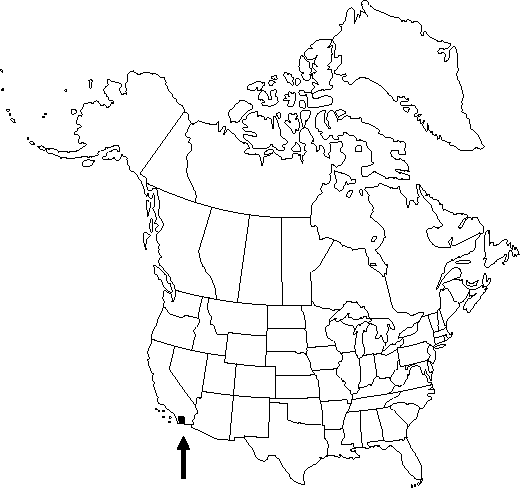Berberis amplectens
Rhodora 39: 376. 1937.
Shrubs, evergreen, 0.2-1.2 m. Stems monomorphic, without short axillary shoots. Bark of 2d-year stems purple, glabrous. Bud-scales 3-6 mm, deciduous. Spines absent. Leaves 5-7-foliolate; petioles 1.5-5 cm. Leaflet blades thick and rigid; surfaces abaxially dull, papillose, adaxially dull, ± glaucous; terminal leaflet stalked, blade 4.4-5.5 × 3.1-4.6 cm, 1.1-1.4 times as long as wide; lateral leaflet blades oblong or circular, 1-5-veined from base, base truncate or cordate, margins undulate or crispate, toothed, each with 9-15 teeth 1-3 mm tipped with spines to 1.4-2.4 × 0.2-0.4 mm, apex truncate or broadly rounded. Inflorescences racemose, dense, 25-35-flowered, 3-6 cm; bracteoles membranous, apex obtuse or rounded. Flowers: anther-filaments distally with pair of recurved teeth: author had no data available. Berries dark blue, glaucous, ovoid to elliptic, 7-9 mm, juicy, solid. 2n = 28.
Phenology: Flowering spring (Apr–May).
Habitat: Rocky slopes in chaparral and open forest
Elevation: 900-1900 m
Discussion
Of conservation concern.
Berberis amplectens is endemic to the Peninsular Ranges of southern California. It is resistant to infection by Puccinia graminis.
Selected References
None.
Lower Taxa
"thick" is not a number.
